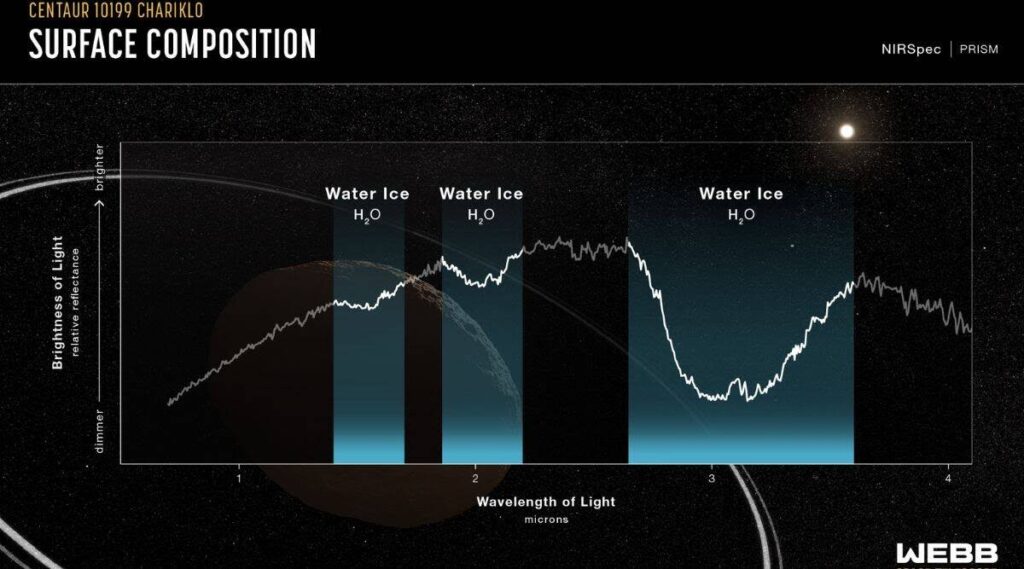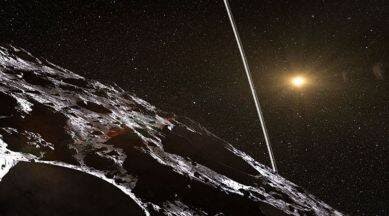Scientists have employed a new method using the James Webb Space Telescope to catch the starlight shadows created by the rings of the far-off asteroid Chariklo, in what NASA is calling an observational accomplishment of exceptional precision. 10199 Chariklo, identified in 1997, is the first asteroid to be found to have a ring system.
After Saturn, Jupiter, Uranus, and Neptune, it was really the fifth astronomical body discovered to have a ring system. The small, ice asteroid is lying outside Saturn’s orbit, more than 3 billion kilometres away.
NASA Uncoverd “A Host”
NASA scientists found that Chariklo is the host of a system with two thin rings in 2013 using ground-based telescopes.
Such rings were thought to only be present around massive worlds like Jupiter and Neptune until their discovery. When Chariklo passed in front of the star, obstructing brightness, scientists found the rings.
In astronomy, this phenomena is known as occultation.
Restoration Of “Chariklo”
It was interesting to see that the star double-blinked once before vanishing behind Chariklo and once again when it reappeared. The two rings of the asteroid were responsible for this starlight blinking.
On October 18 of last year, NASA visited Chariklo once more by using the Near-Infrared Camera (NIRCam) on the Webb spacecraft to keep a careful eye on the far-off star DR3 6873519665992128512. The Chariklo rings were later discovered by keeping an eye out for distinctive dips in the star’s brightness.
We will investigate whether we can distinguish between the two rings clearly when we go deeper into the data. We will examine the thickness of the rings, the sizes and colours of the ring particles, and more from the shapes of the occultation light curves of rings.
Purpose Of Webb Behind The Forage
In a press release, Pablo Santos-Sanz from the Instituto de Astrofsica de Andaluca in Granada stated, “We hope to get understanding into why this small body even has rings at all and potentially identify additional, fainter rings.”
Webb retargeted Chariklo shortly after the occultation, but this time to gather observations of the starlight reflected by the asteroid and its rings. The system’s spectroscopic measurements showed three bands of water ice absorption near Chariklo.

The Spectroscopic Inquiry
Noem Pinilla-Alons, who oversaw the Webb spectroscopic investigation of Chariklo, said in a press release that while ground-based telescope spectra have “hinted at this ice” (Duffard et al. 2014), the fine quality of the Webb spectrum “exposed the unequivocal signature of crystalline ice for the first time.”
Conclusion
The system reflects most of the light back from the asteroid itself. The size of the observed ring is likely one-fifth the size of the body itself, according to current models.
However, to distinguish the role of the rings themselves, researchers will need to study Chariklo with Webb for a period of several years as the viewing angle changes.
